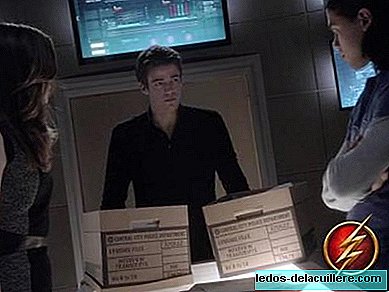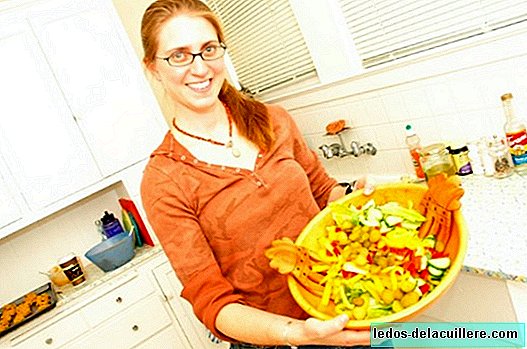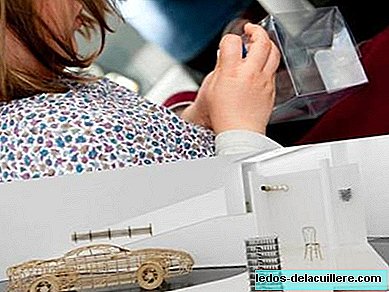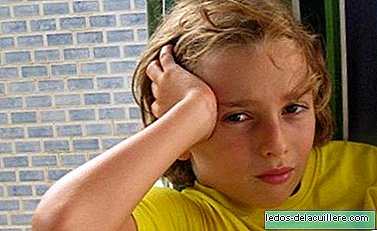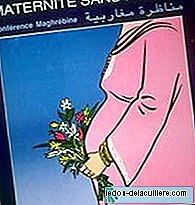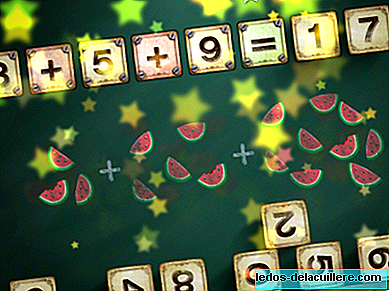Magnets, controls, toys with small pieces, coins ... They are in our homes and seem harmless, but these everyday objects pose a risk to children and in a moment of dismissal they could give us a good scare.
At any time and situation we must be vigilant to prevent domestic accidents and if we know the dangers of these objects, it will be easier to keep them away from babies and children.
Button and alkaline batteries
Button batteries or lithium batteries are very dangerous and can be found in watches, some toys, key chains, alarm clocks ... and also in drawers. These small, round batteries are very dangerous, since they are charged with chemicals and can cause serious problems in the child's digestive system if ingested.
According to a recent study by the National Battery Ingestion Hotline Update, the average number of button cell intakes in the United States per month has grown from 30 in 2002 to more than 80 in 2012. The ones most at risk are children under six years old, being the months of December and January the typically most dangerous (perhaps for Christmas gifts).
A button battery can easily damage or lodge in the esophagus of a small child, they can drown or suffer internal burns and even serious tissue damage. Even in severe cases they can cause death.
Regarding regular alkaline batteries, they also pose a great danger if swallowed, but that is less likely due to their larger size. In any case, if the child has ingested any type of battery, he will need immediate medical attention, so if we have that suspicion we must go to the emergency room in the hospital.
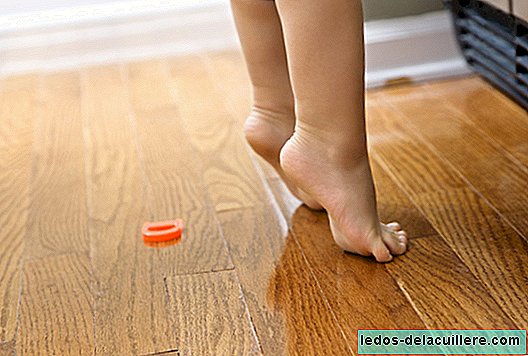
Magnets
Magnets are often found at home in ornaments for the fridge, key chains, chains or as part of games and magnetic toys. Even if they are small, they can cause a lot of damage to the child's gastrointestinal tract.
If a child swallows more than one magnet they can come into contact inside the digestive tract, hinder the blood supply and cause serious health problems and even death.
Because of these risks, in some countries some toys and objects with magnets have been banned and removed from the market. For example, in the United States, between 2009 and 2013, 2,900 children were treated in the emergency room for swallowing magnets of great strength.
If the child swallows a magnet, more than one magnet, or if we believe he has done so, it must be taken immediately to the hospital's emergency department.
Coins, dangerous for children
Coins are among the most common elements that children swallow. Small coins will pass through the child's gastrointestinal tract, but they may not come out and you have to see where they have been, so an x-ray may be necessary. If the coin stays in the throat, it will cause very persistent nausea or cough. Attentive to those symptoms.
But there may be another danger, and that is that the coin goes to the airway, although this situation is rare and would trigger an immediate intense and very evident drowning. Heimlich maneuver should be applied.
If the child swallows a coin, take it to the doctor. In the case of suffocation or suffocation, call the emergency room and apply first aid.
Small pieces of toys
Do not let your child play with small toys or containing pieces that can be detached. If the child takes a small piece with a rounded edge to the mouth, it will pass through the digestive system. But large pieces or with sharp edges can cause serious problems in the tract, choking ... So go to the pediatrician to assess the severity of ingestion.
Not so dangerous everyday objects
The gum It is a fairly benign element that a child can swallow accidentally or intentionally. But it is not true the myth that the intestines are going to stick or that the gum does not dislodge until seven years (or never). A gum will leave the digestive tract in a couple of days. The biggest danger is if the amount of chewing gum is large enough to cause suffocation.
Modeling clay, modeling clay, waxes: Most of the main brands of these materials are non-toxic and must be specified in the package. They must be homologated and specific materials for children. A small amount of these elements may cause mild stomach upset, diarrhea or colored stools. Obviously, if the child swallows a large amount or feels sick when swallowing some of these materials, it should be taken to the doctor.
In summary: after swallowing an object, if the child develops cough, nausea, difficulty swallowing, drooling, chest pain, stomach pain, vomiting or problems when going to the bathroom, we should not let the symptoms pass and ensure that he receives medical assistance.
Ingestion prevention is important, so that we do not leave children unattended or play with toys inappropriate for their age. To avoid these dangers we must ensure that everyday objects that pose a risk to children They are not within reach and do not buy toys or products that are not approved and do not comply with safety regulations.
Photos | iStock
In Babies and more | Nine tips to prevent suffocation by small objects, let's not take their eyes off! The most frequent dangers in playgrounds



